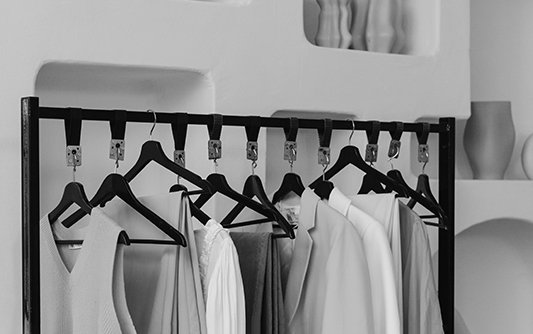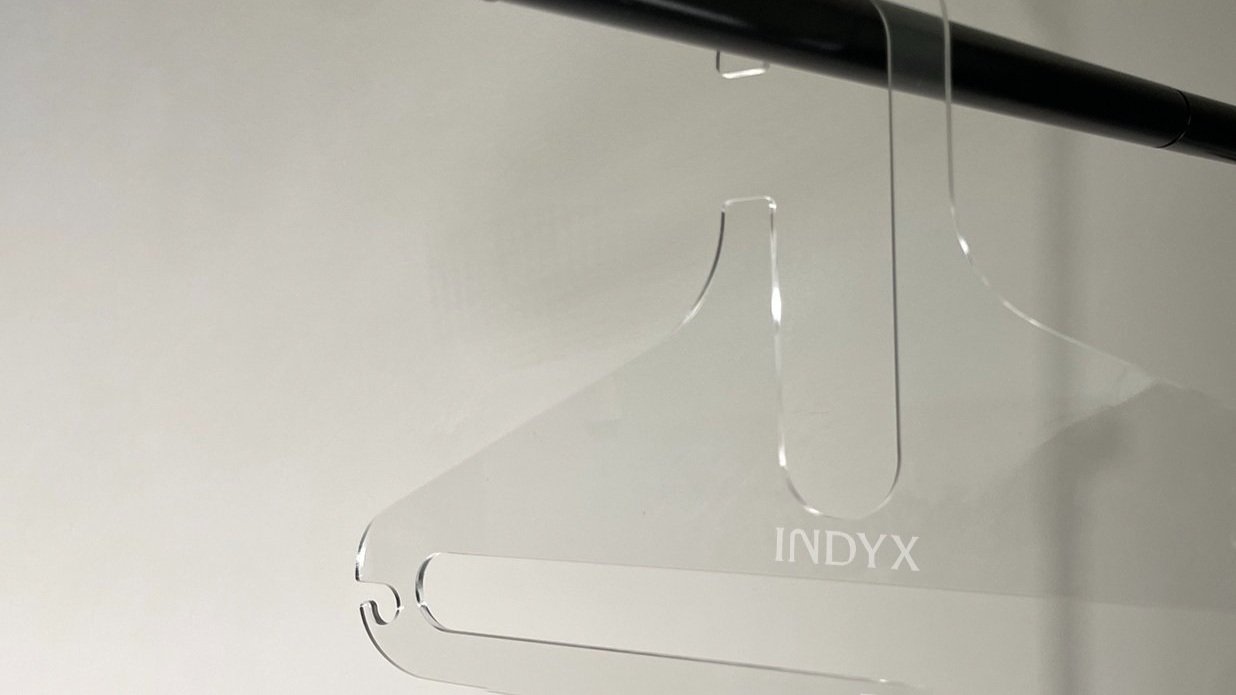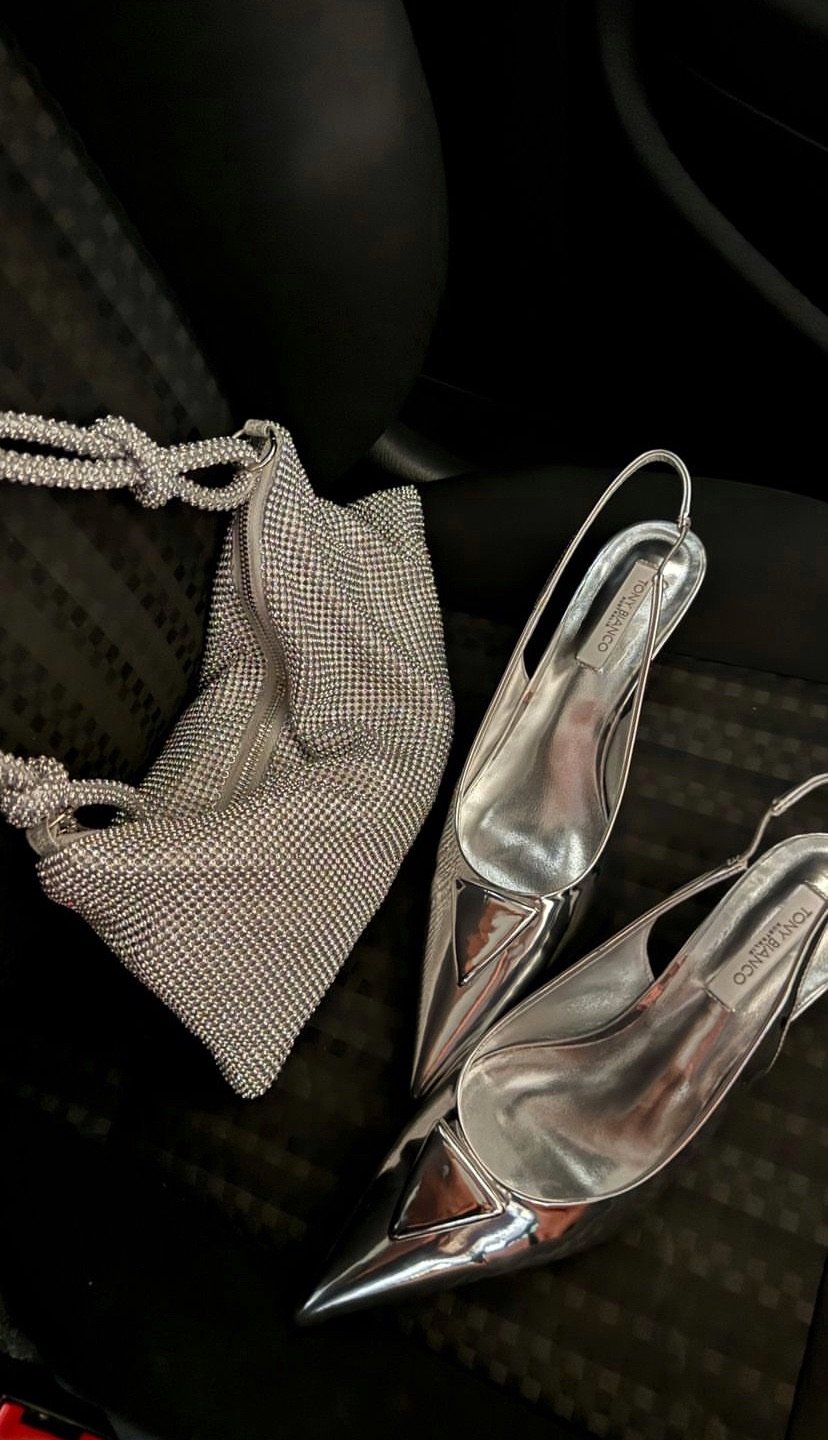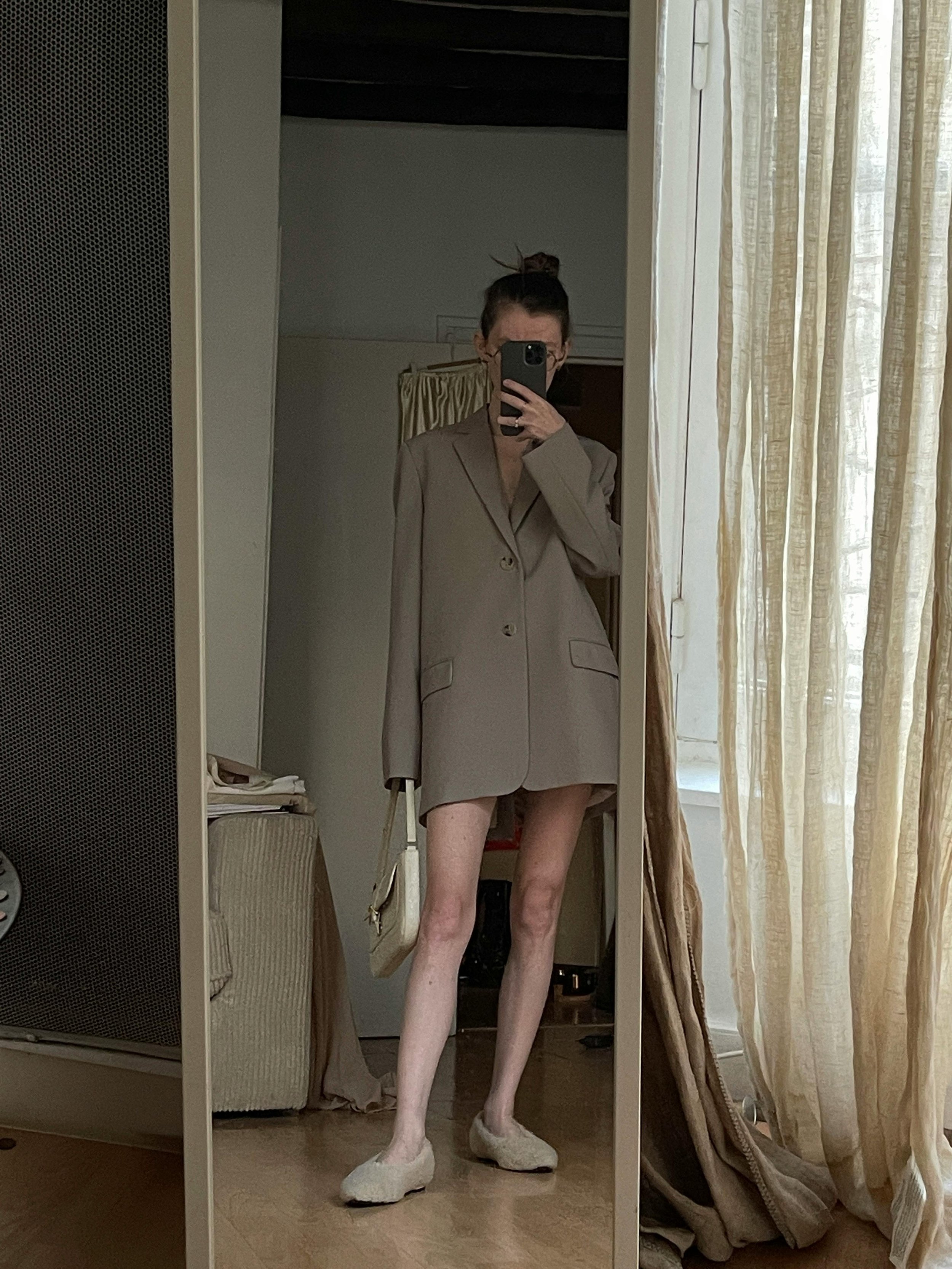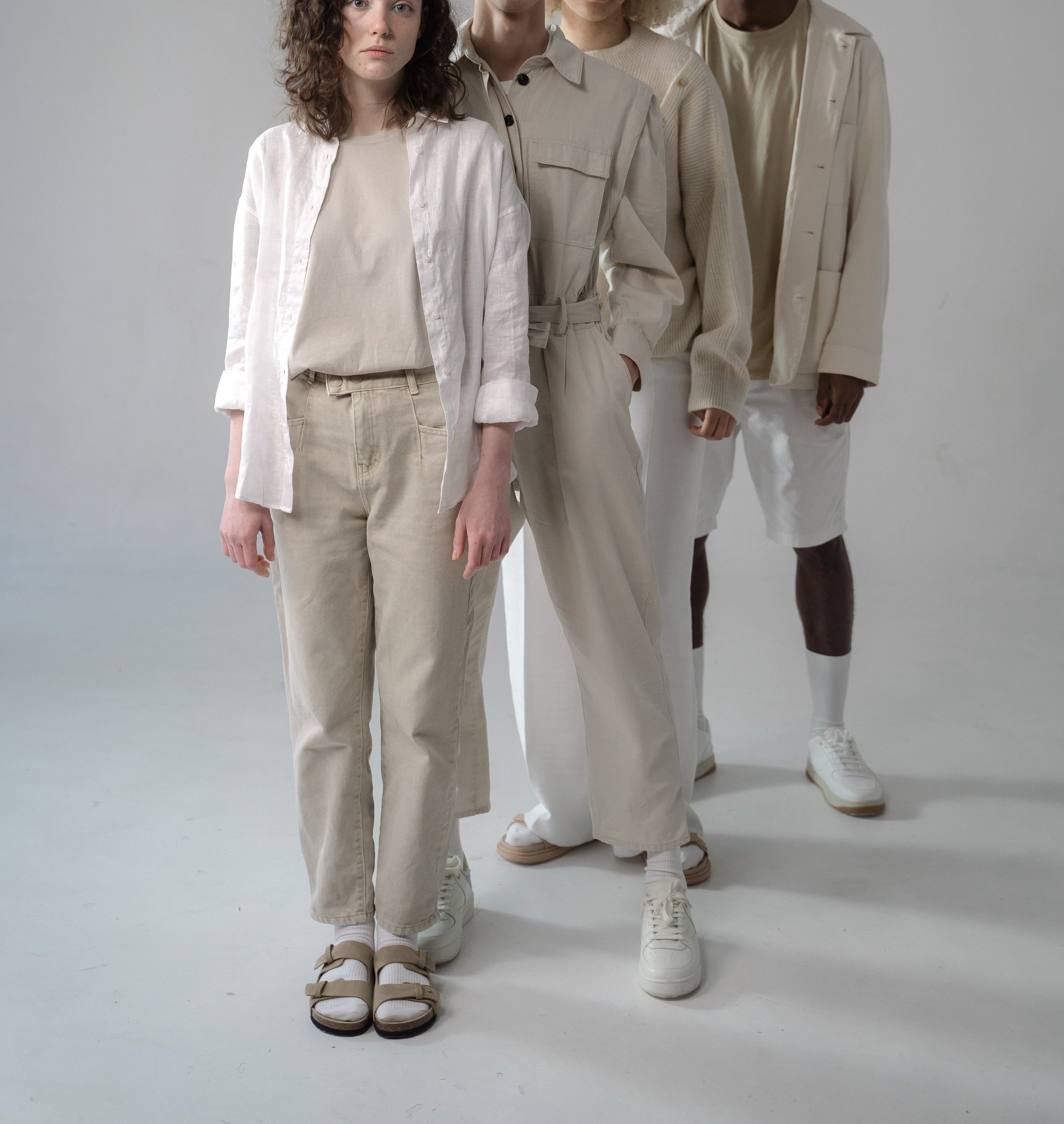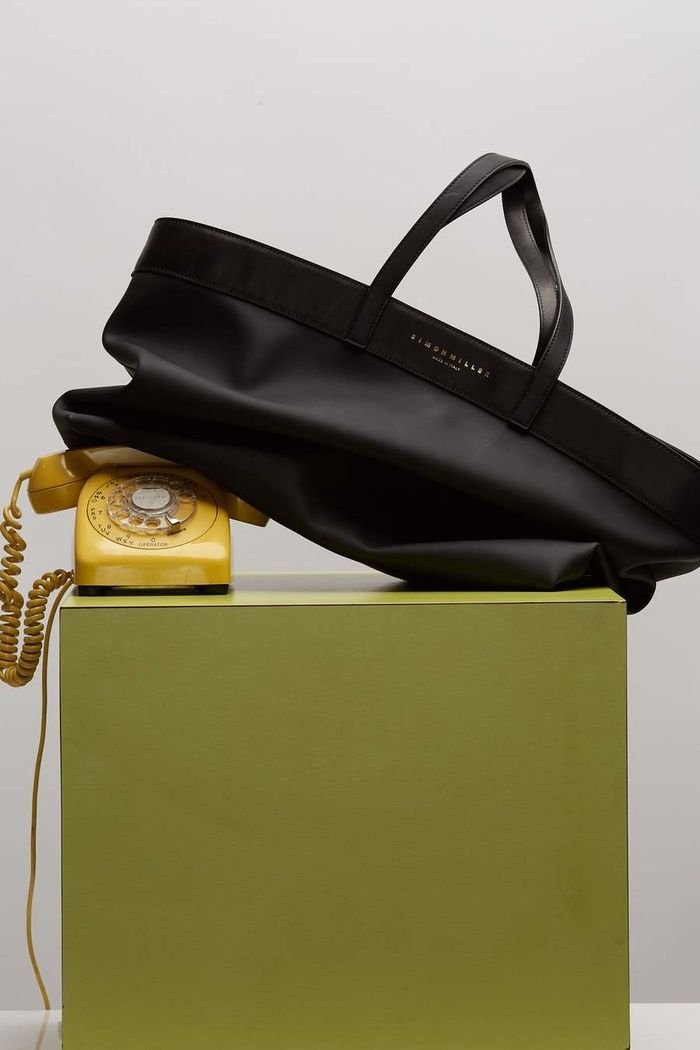What is Cost-Per-Wear and Why Should I Care?
We all want to know: how much should I be spending on my clothes? According to a 2021 survey, the average American spends $161 per month on clothing.
But regardless of how much you spend on clothes, the majority of the items in your closet are likely going unworn. InYou Are What You Wear, Dr. Jennifer Baumgartner shares that on average, we are only wearing about 20% of our closet! That sounds to us like a whole lot of money spent on clothes going to waste - and maybe it’s time to look at the true cost beyond just the price tag.
Whether the problem is that we buy things we don’t need or keep things we don’t like, we believe that the key to getting more value out of your wardrobe might be quite simple: cost-per-wear.
What is Cost-per-Wear?
Cost-per-wear (CPW) is a completely personal way to look at the true value of your clothing, beyond just the price tag. In practice, cost-per-wear is a formula that helps you make well-informed decisions on whether to buy, wear, or have an amicable break up with an item.
Usually, we think of the cost of clothes only as the number we agree to pay upfront. However, the true cost of your clothes isn’t just the price tag. Assessing our fashion investments accurately requires that we consider other variables. That’s where CPW comes in.
Cost-per-wear can keep seemingly unrelated but relevant details in the forefront of your mind in a practical and consistent way. Considering a potential new purchase? Deciding what to do with an item you already own? Cost-per-wear will help you make an informed decision based on how many times you actually put the item to good use. When you get the hang of using cost-per-wear, you won’t look at an item and only think of how cute it is or whether it fits your budget. You’ll be able to more accurately assess whether it can bring true value to your life.
How Do I Calculate Cost-Per-Wear?
You can get the cost-per-wear of an item by dividing its true cost by the number of times it can be worn before you donate, resell, or throw it away.
CPW = (item cost + additional expenses) / # of total wears
You can use the formula in the good old-fashioned way: plugging the numbers in the equation and doing the math. But…why subject yourself to this method when there are better options available?
You can upgrade from your trusty TI-89 to an online cost-per-wear calculator (Glamour has a nice option). However, these cost-per-wear calculators require you to estimate how much you wear something rather than tracking real results, so the results will never be totally accurate.
There are also a few cost-per-wear spreadsheet templates that are available for purchase. A cost–per-wear spreadsheet allows you to input the items in your closet and track when you wear them, outputting the cost-per-wear for each item along with a few nifty Excel charts. This is a step up, but still quite manual and tedious. It’s also a bit of a one-trick-pony in its functionality. You put in a lot of work, for just that one benefit!
By far the easiest and most rewarding way to track your cost-per-wear is with the Indyx app. Track when you wear items in your digital wardrobe, and Indyx automatically calculates your cost-per-wear for every item. This gives you an accurate reading of your closet’s cost-per-wear with full visibility. Plus, Indyx’s digital wardrobe offers more than just that one benefit. Tracking cost-per-wear is only one of many fabulous features in a larger ecosystem, where the investment of cataloging your wardrobe also pays off in the ability to style and save outfits, connect with a personal stylist, and resell–all in one place!
Why Should I Use Cost-Per-Wear?
If you’re still on the fence of whether you should look at the cost-per-wear of your closet, let us lay out all the key benefits cost-per-wear tracking offers. It can…
Reduce overspending
Considering cost-per-wear discourages unnecessary spending and impulsive buys because it raises the standard for what makes it into your closet. When you consider how often you’ll actually wear an item and have a mental checklist for what makes it into your closet (e.g., durable, connects multiple outfits, fills an essential gap), you’re less likely to impulsively buy something that just looks cute.
Show you what to avoid buying
You can use cost-per-wear as a data-driven way to gain insight on what types of items you shouldn’t buy. When you take inventory of your closet, try drawing connections between the items with a high cost-per-wear. Do your highest cost-per-wear items share any common characteristics? If you notice that these items are often very formal in style, dry clean only–whatever it is for you!–you can take it as a strong sign to walk away when you’re tempted by similar items.
Give you confidence about what to buy
On the other hand, what qualities do your lowest cost-per-wear items share? Comfort? A specific color? A silhouette especially flattering to your body type? You can be more confident about buying a replacement or another one with similar characteristics.
Simplify getting dressed
When you make purchases thinking of how often you’ll wear something, you’re forced to think of how that item fits in with the bigger picture of your entire wardrobe. If you bought only one item and took it home, would you be able to form outfits right away? Or would you need to buy more stuff to create them? We’re probably all guilty of having bought that one thing that looked marvelous at the store, but then ended up never wearing because it was impossible to style. Remember: we live in outfits, not items!
Remind you which items need more love
Once you’re tracking cost-per-wear, you can keep an eye out for the items in your wardrobe with high cost-per-wear so you can make an effort re-style and re-wear those items.
Sometimes we simply forget to wear an item we like because we’re just stuck in a rut of repeating only our tried and true outfits. Looking at cost-per wear can be a great way to get inspired to get more style out of the things you already have, and make your wardrobe investments more efficient in the process!
This is where it comes in handy to have a tool to improve visibility into your closet *wink wink* to come up with new outfits we’ll eventually love wearing again and again.
Let you know it’s time to part ways
During closet check-ins, cost-per-wear can help steer your decision on what to keep and what to donate or resell based on how often you already wear it. If you have an item that is gathering dust and you’re having a hard time lowering its cost-per-wear, it might be time to say your goodbyes. You can reintroduce it into the fashion cycle by donating it to your local thrift store or reselling it. That way, you can re-invest in something that will offer you more value.
Learn more about how to decide when it’s time to move on, and weigh the pros & cons of selling vs. donating
For the Cost-per-Wear Skeptics…
I can hear you already…
“Isn’t shopping supposed to be fun? The last thing I want when I’m shopping is a math assignment!”
While the prospect of a handy equation can be exciting to some, it might also feel super clunky and burdensome to others. And, understandably so! Sometimes we turn to shopping as a way to decompress, not to make well-informed consumer decisions with a systematic method!
If that’s you, it can be helpful to think of cost-per-wear as more of a philosophy, or a friendly guide that wants nothing more than for you to have a functional wardrobe that brings you joy.
Knowing when to set cost-per-wear aside is equally important and can take the pressure off. You only wear that dated pastel yellow skort once a year, but could never part with them because they belonged to your mom and make you feel connected with your family? By all means, keep them! It’s your best friend’s bachelorette party and you’re dying to pull the trigger on that sequin dress that you’ve been obsessing over for weeks, even though you know you’ll probably never wear it again? Do it.
As long as you’re not hoarding tons of clothes that you don’t wear while constantly feeling like you have nothing to wear, it’s okay to ignore cost-per-wear once in a while and let your heart win out. Fashion should be fun, after all.
How Do I Get Started Tracking Cost-per-Wear?
As mentioned, there are multiple ways to calculate and cost-per-wear. The best way to do so, in our opinion, is to use a cost-per-wear app like Indyx . With Indyx, you will not only get your items' accurate cost-per-wear rankings, but also enjoy many other benefits such as improved closet visibility, access to professional outfit recommendations from our stylists, a built-in resale marketplace, and more!
-
On average, Americans spend $161 on clothes per month. That means that the average American spends $6 on clothes every day and $1,932 per year.
-
As of 2018, Americans averaged 68 new clothing purchases a year. Wow! Let’s try to reduce that, right? If we divide the yearly clothing expenditure of $1,932 by 68 pieces of clothing, we find that the cost of clothes averages around $28.41 per item. However, considering that on average women wear an item only seven times before getting rid of it, the average cost-per-wear of $4.06 is actually pretty high!
However, most people don’t have the cost-per-wear expertise you just gained by reading this article. Now that you know what to pay attention to and have access to Indyx’s cost-per-wear feature, maximizing your closet by maintaining a low cost-per-wear will be a simple task.
-
To lower your wardrobe cost or reduce an item’s cost-per-wear, you can buy high-quality, low-maintenance items that won’t have additional costs, wear your items more often, and resell the item when you’re done (the amount you sell it for can get subtracted out of the cost in the equation!).
-
Imagine if every single purchase you made starting today had high-quality , required low maintenance costs, matched your lifestyle, was easy to style with the stuff you already have, and brought you joy. Is a late start worth it? Absolutely! The best time to start might have been yesterday, but the second best time is today.
Isa is a communications specialist, writer, and content creator. In her free time, she likes reading, thrifting, and decorating her place to feel like a retro-modern Pinterest board. If you see her in public, she’ll likely be enjoying a few scoops of gelato and/or admiring strangers’ dogs.











